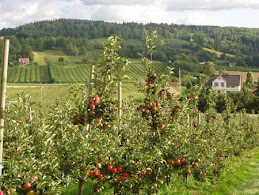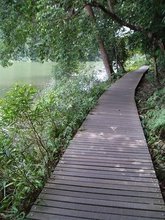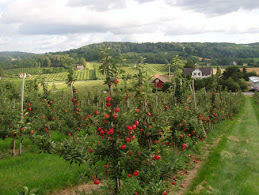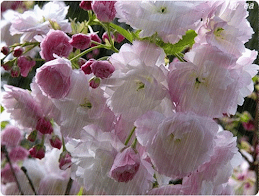From http://imcmsimages.mediacorp.sg/CMSFileserver/documents/006/PDF/20120222/2202WNP038.pdf
My Paper, Wednesday, Feburary 22, 2012, Page A8, World
From http://epaper.mypaper.sg/cnd/fvxen/fvxp/fvxpress.php?param=2012-02-22
Source Website: http://www.todayonline.com/World/EDC120221-0000165/Ice-Age-flower-blooms-after-30,000-years
By AP, BLOOMBERG, Updated 09:49 PM Feb 21, 2012

PHOTO: A prehistoric plant resurrected from frozen tissue.
http://imcmsimages.mediacorp.sg/cmsfileserver/showimageCC.aspx?450&223&f=2163&img=2163_550521.jpg

http://news.yahoo.com/photos/science-and-technology-slideshow/study-describes-discovery-70-squirrel-hibernation-burrows-russias-photo-105305839.html;_ylt=AhKcKuk9_2g5EYYOI7ZJ5nmIhMgF;_ylu=X3oDMTRvMjh2aHQ2BG1pdANBcnRpY2xlIFJlbGF0ZWQgQ2Fyb3VzZWwEcGtnA2JkMDllMDk0LWU0YjctMzQ5Yi1iZDZiLWIyNjZiNzg3Nzc4YwRwb3MDMgRzZWMDTWVkaWFBcnRpY2xlUmVsYXRlZENhcm91c2VsVGVtcAR2ZXIDYzNkNDZlMzAtNWM3YS0xMWUxLWE3N2UtYjAxZDExYjZmNWUz;_ylg=X3oDMTM3NHF2cnU5BGludGwDdXMEbGFuZwNlbi11cwRwc3RhaWQDYWMyMjljY2UtODI0Yi0zNDk3LTg5MWEtMTVlMTI1ODM5ODY4BHBzdGNhdANzY2llbmNlfGJpb3RlYwRwdANzdG9yeXBhZ2UEdGVzdAM-;_ylv=3

PHOTO: Ice Age mammals
http://www.arizonaskiesmeteorites.com/AZ_Skies_Links/Mammoth_Tusks/Wooly-Mammoth.jpg
http://image455910.seesaa.net/article/182212676.html

http://www.foxnews.com/scitech/2012/02/21/russians-resurrect-30000-year-old-frozen-flower/

http://news.sky.com/home/strange-news/article/16174136

PHOTO: Ice Age Dinosaurs
https://blogger.googleusercontent.com/img/b/R29vZ2xl/AVvXsEg706mE5Upfjg67eJXeEQ_O7SuFwywDt25JUBCj2-ofbkfno3_VS1nQcfbvxZzHZVGU-lc6jDS7-fq9IhsxMhSxEZgbYXLm3tzJKayAbwNxfLnf3oxWL8MXUmfH3eMNCQxlN7fwsKMof_Zd/s1600/Allosaurus.jpg
http://www.arizonaskiesmeteorites.com/Dinosaur_Fossils_For_Sale/Allosaurus.jpg
http://www.arizonaskiesmeteorites.com/Dinosaur_Fossils_For_Sale/
Source Website: http://blogs.discovermagazine.com/notrocketscience/2012/02/20/flowers-regenerated-from-30000-year-old-frozen-fruits-buried-by-ancient-squirrels/

http://www.sott.net/image/image/s4/94765/full/ff.jpg
http://www.sott.net/articles/show/241859-Just-in-time-for-the-ice-age-Ancient-plant-brought-back-to-life-after-being-buried-by-squirrels-in-Siberian-permafrost-more-than-30-000-years-ago

https://blogger.googleusercontent.com/img/b/R29vZ2xl/AVvXsEiGkvTnFJWhToDExyrqn9LFwsG3TGBFQZwOmXV2wx_17v3XJ2BH_3BrnT9qbgrGT46FhuV5w1STs-Cjdv5KoEqX5_Mdv3i3v48cpA9aK0BX2tPWGZ6QMwTuxyu3IZmJHevrdpGMBP8UbjvR/s1600/tumblr_lzo5araqHQ1r1o1p8o1_500.jpg
http://thegreenqueen19.tumblr.com/
Reference
- Today, Wednesday February 22, 2012, Page 36, World
- http://imcmsimages.mediacorp.sg/CMSFileserver/documents/006/PDF/20120222/2202WNP038.pdf
- My Paper, Wednesday, Feburary 22, 2012, Page A8, World
- http://epaper.mypaper.sg/cnd/fvxen/fvxp/fvxpress.php?param=2012-02-22
- http://www.todayonline.com/World/EDC120221-0000165/Ice-Age-flower-blooms-after-30,000-years
- http://imcmsimages.mediacorp.sg/cmsfileserver/showimageCC.aspx?450&223&f=2163&img=2163_550521.jpg
- http://l.yimg.com/bt/api/res/1.2/LiV30Cu7xvG0tJRq3nIjbw--/YXBwaWQ9eW5ld3M7Zmk9aW5zZXQ7aD01MDg7cT04NTt3PTYzMA--/http://media.zenfs.com/en_us/News/afp.com/TRPar6879282.jpg
- http://news.yahoo.com/photos/science-and-technology-slideshow/study-describes-discovery-70-squirrel-hibernation-burrows-russias-photo-105305839.html;_ylt=AhKcKuk9_2g5EYYOI7ZJ5nmIhMgF;_ylu=X3oDMTRvMjh2aHQ2BG1pdANBcnRpY2xlIFJlbGF0ZWQgQ2Fyb3VzZWwEcGtnA2JkMDllMDk0LWU0YjctMzQ5Yi1iZDZiLWIyNjZiNzg3Nzc4YwRwb3MDMgRzZWMDTWVkaWFBcnRpY2xlUmVsYXRlZENhcm91c2VsVGVtcAR2ZXIDYzNkNDZlMzAtNWM3YS0xMWUxLWE3N2UtYjAxZDExYjZmNWUz;_ylg=X3oDMTM3NHF2cnU5BGludGwDdXMEbGFuZwNlbi11cwRwc3RhaWQDYWMyMjljY2UtODI0Yi0zNDk3LTg5MWEtMTVlMTI1ODM5ODY4BHBzdGNhdANzY2llbmNlfGJpb3RlYwRwdANzdG9yeXBhZ2UEdGVzdAM-;_ylv=3
- http://www.arizonaskiesmeteorites.com/AZ_Skies_Links/Mammoth_Tusks/Wooly-Mammoth.jpg
- http://image455910.seesaa.net/article/182212676.html
- http://i.dailymail.co.uk/i/pix/2012/02/21/article-0-11D6DE68000005DC-887_634x477.jpg
- http://www.foxnews.com/scitech/2012/02/21/russians-resurrect-30000-year-old-frozen-flower/
- http://news.sky.com/sky-news/content/StaticFile/jpg/2012/Feb/Week3/16174162.jpg
- http://news.sky.com/home/strange-news/article/16174136
- https://blogger.googleusercontent.com/img/b/R29vZ2xl/AVvXsEg706mE5Upfjg67eJXeEQ_O7SuFwywDt25JUBCj2-ofbkfno3_VS1nQcfbvxZzHZVGU-lc6jDS7-fq9IhsxMhSxEZgbYXLm3tzJKayAbwNxfLnf3oxWL8MXUmfH3eMNCQxlN7fwsKMof_Zd/s1600/Allosaurus.jpg
- http://www.arizonaskiesmeteorites.com/Dinosaur_Fossils_For_Sale/Allosaurus.jpg
- http://www.arizonaskiesmeteorites.com/Dinosaur_Fossils_For_Sale/
- http://blogs.discovermagazine.com/notrocketscience/2012/02/20/flowers-regenerated-from-30000-year-old-frozen-fruits-buried-by-ancient-squirrels/
- http://www.sott.net/image/image/s4/94765/full/ff.jpg
- http://www.sott.net/articles/show/241859-Just-in-time-for-the-ice-age-Ancient-plant-brought-back-to-life-after-being-buried-by-squirrels-in-Siberian-permafrost-more-than-30-000-years-ago
- https://blogger.googleusercontent.com/img/b/R29vZ2xl/AVvXsEiGkvTnFJWhToDExyrqn9LFwsG3TGBFQZwOmXV2wx_17v3XJ2BH_3BrnT9qbgrGT46FhuV5w1STs-Cjdv5KoEqX5_Mdv3i3v48cpA9aK0BX2tPWGZ6QMwTuxyu3IZmJHevrdpGMBP8UbjvR/s1600/tumblr_lzo5araqHQ1r1o1p8o1_500.jpg
- http://24.media.tumblr.com/tumblr_lzo5araqHQ1r1o1p8o1_500.jpg
- http://thegreenqueen19.tumblr.com/









































.jpg)
.gif)
.jpg)


















































%20-%20%E5%82%B7%E5%BF%83%E7%9A%84%E8%B7%AF%20(Sh%C4%81ng%20x%C4%ABn%20de%20l%C3%B9)%20-%20The%20Road%20of%20Sorrow%20(With%20Subtitle)_11.png)





